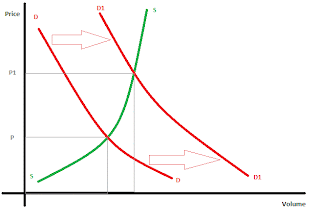Two Suitors?
Scomi has just announced that it will do a private placement of some 10% of its paid-up capital would be made to IJM. In addition, IJM will subscribe for RM110 million worth of zero coupon 3-year Redeemable Convertible Secured Bond to be issued by Scomi. This news came hot on the heal of the news that Abu Sahid of the Maju Group has emerged as a substantial shareholder in Scomi with a 8.75%-stake. News of Abu Sahid's interest in Scomi first surfaced in early September when the market learned that Siew Mun Chuang had amassed a 5.3%-interest in Scomi. Siew is closely linked to Abu Sahid. How will Abu Sahid & IJM work together with the existing major shareholder, Shah Hakim Zain? Abu Sahid, with interests in steel production & mining (including a stake in Australia-listed Avalon Mineral Ltd), could be keen in Scomi's Oil & Gas business while IJM could be interested in Scomi's subsidiary, Scomi Engineering Bhd. Are they going to work together or are they going to carve up the group?
Scomi's Restructuring
In February, Scomi announced a corporate restructuring, which would
see its oilfield services businesses and those of Scomi Marine merged under a
new, full-fledged integrated oil and gas marine and drilling services provider. When merger has been completed, Scomi will make an Offer for Sale of its Scomi Marine shares. The proceed
from that sale will be used to pare down the group’s debts. As at 30/6/2012, the
group has short-term borrowings of RM711 million & long-term debt commitment
of RM387 million.
Scomi venturing into Oil and Gas Exploration and Production
Scomi is believed to be the front runner
for two risk-service contracts (RSCs) to be awarded by Petronas for the
Tembikai
and
Cenang marginal fields off Peninsular Malaysia. These two fields
with contracts valued at between US$200mil (RM620mil) to US$400mil (RM1.2bil)
each. It is said to be partnering an Australian company, Cue Energy Resources Ltd,
for this bid. Cue Energy is an oil and gas exploration and production
company with a presence in South-East Asia and Australasia.
Technical Outlook
Scomi has finally put in a decent rebound after declining continuously since May 2009. Its immediate resistance is at RM0.40 and thereafter at RM0.45 & RM0.55. Its immediate support is at RM0.30.
 Chart 1: Scomi's monthly chart as at September 25, 2012_3.30pm (Source: Quickcharts)
IJM's Possible Angle
Chart 1: Scomi's monthly chart as at September 25, 2012_3.30pm (Source: Quickcharts)
IJM's Possible Angle
I believe IJM's interest in Scomi is to get a slice of the action in the monorail market. For more on the monorail project, go
here. Combining that with its strong engineering background, IJM can offer a complete solution to the transportation problem faced by many cities in the developing & emerging nations.
IJM- A Patient Chess Player
While I see potential in a tie-up between IJM & Scomi, the fruit of this marriage may not happen immediately. That's because IJM is a patient mover. If the management team in IJM & Scomi can work well together, things can happen very quickly. If not, IJM will bid its time. A clear example is how IJM bought a 25%-stake in KEuro at 28 sen apiece for RM33.1 million in 2005. IJM Corp said at the time the
purchase was influenced by its interest in KEuro’s concessions to build the
West Coast Expressway (a highway stretches for 316km from Banting, Selangor to Taiping, Perak) and its 50%-stake in the Canal City, a 1,900-acre development near
Kota Kemuning in Shah Alam.
Today, the West Coast Expressway project & the Canal City development are about to kick off. IJM's shareholders will thank their management for their strategic move to take a stake in the troubled KEuro seven years earlier for a token sum of RM33.1 million.
 Chart 2: KEuro's monthly chart as at September 25, 2012_3.30pm (Source: Quickcharts)
Chart 2: KEuro's monthly chart as at September 25, 2012_3.30pm (Source: Quickcharts)
 Chart 3: IJM's monthly chart as at September 25, 2012_3.30pm (Source: Quickcharts)
Which is a Better Bet?
Chart 3: IJM's monthly chart as at September 25, 2012_3.30pm (Source: Quickcharts)
Which is a Better Bet?
Looking at the chart of KEuro & IJM, there is no doubt that one would have been better rewarded if he/she had bought into KEuro in 2005, instead of IJM. On the same basis, it would be better to invest in Scomi & wait patiently for the full potential of the group to be realized.















































